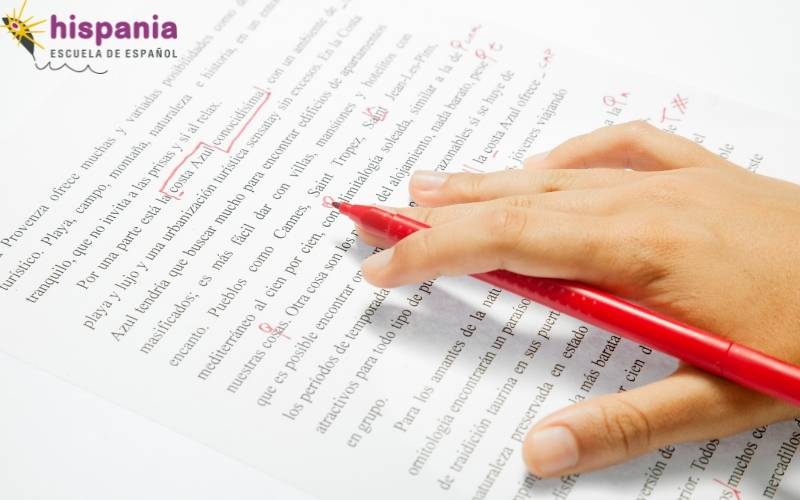
The 17 best books and guides for learning Spanish
Today we are looking at something that my students are always asking for...
“What are the best books for learning Spanish?”.
If you've asked yourself this question before too, keep reading because I am going to make you a list of the 17 best guides and books for studying Spanish.
What does a good Spanish foreign language book need to include?
Before we start with the aforementioned list, let's answer the following question:
What does a good Spanish guidebook need to help you learn Spanish?
Let me summarise it in 8 points.
1. Match your level
Firstly, the contents of the book must match the indicated level.
For example, if we were working with a basic Spanish book for foreigners (A1-A2), the exercises, texts and everything else must be appropriate to that level.
It would not make sense, if the guidebook included technical vocabulary or complicated exercises with complex subjunctive structures.
In this case, the book would not be appropriate to the level.
2. Be age appropriate
You might be asking yourself, aren't books for adults just the same as books for teenagers? Well the answer is, no.
And the exact same goes for language books.
A Spanish book needs to be appropriate to the age of the reader.
If the book is aimed at children, the book should include many fun activities, illustrations, short texts...
On the other hand, if the books is aimed at adults they can include longer texts and exercises with fewer images.
3. Being adapted to the need: specific manuals
What is your goal when learning Spanish?
Are you focusing on grammar?
Do you prefer learning random or topic specific vocabulary?
Or maybe you are looking to prepare for the DELE exam?
Before you commit to buying a guidebook, ask yourself these questions.
Then you'll know what type of book do you need.
There are general guidebooks or topic specific ones that will serve you according to your needs.
We are including some very interesting ones in the list we'll look at later. 😉
4. Contain real elements
Imagine the following situation:
You buy a Spanish book and you're really excited to start reading it.
The title of the book is: “The entry of the euro in Spain”.
And you think: "Wait a minute, didn't that happen a really long time ago?"
You look at the date of the article and it says: “January 2002”. 🙄
Nobody likes reading about news that happened 20 years ago which no longer has any relevance today.
Guidebooks for teaching Spanish to foreign learners need to include true elements about current affairs.
Texts that refer to the society we are living in today will catch the attention of students.
And they'll appear even more attractive if they include information related to student life in Spain which might help students solve their problems.
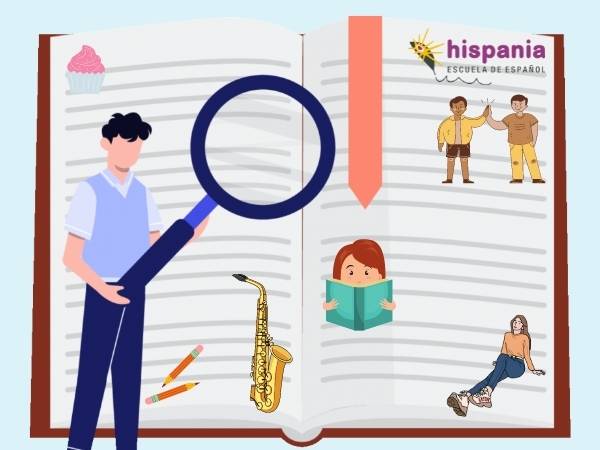
5. Have illustrations to facilitate understanding
Before I mentioned that children's language books should include pictures.
Although slightly fewer, language books aimed at adultsshould too.
All language books should include a variety of illustrations for several reasons:
Pictures compliment words perfectly.
They help to facilitate understanding of the activity or the text. Images are often symbolic and help the reader understand the context.
Additionally, the images help to visually break up the text.
6. Be entertaining, visual and entertaining
All my books for learning Spanish are enjoyable, visually stimulating and fun.
We already know that using pictures can help achieve this. But, there are other ways to accomplish this too:
A well laid out book is more visually appealing.
Especially if there is balance and cohesion between the words, images, graphic elements and colour.
How else can we make a book seem a little more fun?
Fun activities.
Playing games!
After many years of experience as a teacher, I have noticed that (almost) all of us love to play games, regardless of age.
Even at the highest levels playing games in class is really important..
By doing so, students are able to better retain what they have learned because they create a memory of a fun situation shared with their classmates.
7. Be theoretical and practical
Another idea that encourages positive energy is the combination of theory and practice.
If the learning material is too theoretical, it will most likely be boring.
On the other hand, a book that only contains practical exercises without any theoretical explanations will be difficult to follow.
A balanced combination of theory and practice will ensure that students have the necessary tools to help them learn, without getting bored or stressed.
8. Have complementary content
Finally, there is another element that greatly increases the interest of a book to learn a foreign language:
Include additional content.
Additional content can be included in many ways:
- An additional exercise or work book.
- An address to a web page.
- CD's or other listening comprehension resources.
- A link to a video.
- A survey to do on the street.
- A game.
- A list of vocabulary.
- The answers to the exercises.
You will find the book more useful if it encourages you to continue learning Spanish through other means.

Interesting guidebooks
Now we've seen what the key features to a great Spanish guidebook are, let's take a look at...
What the best book for learning Spanish as a foreign language is?
Truthfully there isn't just one book that does everything because there are many aspects to learning a language: grammar, vocabulary, exams, expressions...
So we've put together a list of 17 books to learn Spanish and The 20 best books to improve your level of Spanish.
I will divide them into three categories:
- Guidebooks for learning Spanish without a teacher.
- Books for studying alongside a teacher.
- Books to help you prepare for the DELE and SIELE exams .
Shall we get started?
¡Vamos allá!
Books for learning without a teacher
Is it really possible to learn spanish with a book andwithout a teacher?
Of course it is! However, it will most likely take much longer and you won't have anyone to correct your mistakes or explain where you are going wrong.
Let's start our list off with some extremely comprehensive books, both theoretically and practically.
You can study Spanish language on your own , without a teacher, by using these books.
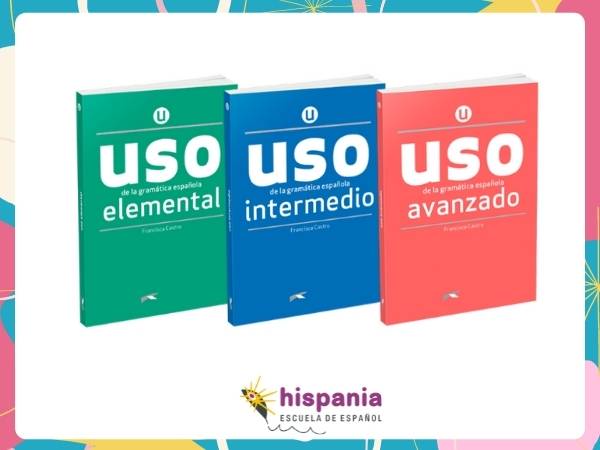
Uso de la gramática española (Francisca Castro, Editorial Edelsa)
Uso de la gramática española is my favourite Spanish language book when it comes to grammar exercises.
It has all the classic activities that never fail:
- Gap fills.
- Sentence matching.
- Verb conjugations.
- Multiple choice.
- Correcting errors.
- Etc.
The contents is very clear and in just one sentence tells you the grammar that you are going to learn in each topic.
For example:
- Nouns and adjectives.
- The verb SER.
- Estar and hay.
- Possessive pronouns.
- Etc.
Each topic is accompanied by a theoretical explanation with examples, illustrations and lots of exercises.
The exercises are perfect for practicing grammar.
The book has three editions that cover all levels: elementary, intermediate and advanced.
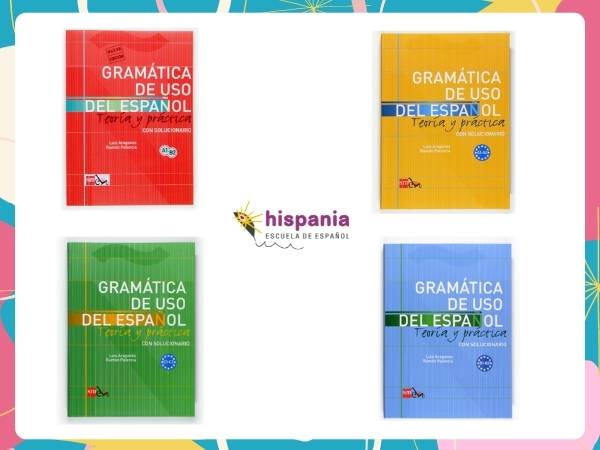
Gramática de uso del español. Teoría y práctica (Luis Aragonés, Ramón Palencia y Ángel Sánchez. Editorial SM)
Gramática de uso de español is another brilliant Spanish grammar book .
Each topic is a grammar lesson, with its theoretical explanations, examples and exercises that increase in difficulty as you progress.
It also includes illustrations and pictures to facilitate understanding and highlight the most important points.
One of the most striking things about this book is its format.
There are 4 books; one general and three specific:
- Gramática de uso del español. A1-B2.
- Gramática de uso del español. A1-A2
- Gramática de uso del español. B1-B2
- Gramática de uso del español. C1-C2
The first book will give you a general understanding of Spanish and a good base, since it includes the basic and intermediate level.
The other three are more specific and will help you to reinforce the contents of your chosen level. They have over 400 exercises.
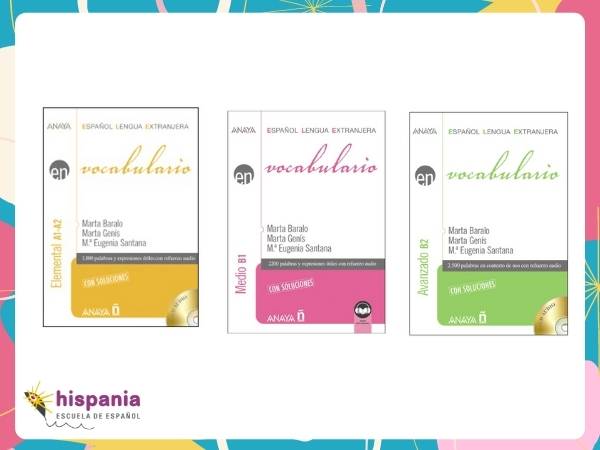
Vocabulario (Marta Baralo, Marta Genis y Mª Eugenia Santana. Editorial Anaya)
Let's take a look at one of the coolest books on Spanish vocabulary .
There are three books on Spanish vocabulary , all at different levels:
- Vocabulary: elementary level.
- Vocabulary: intermediate level.
- Vocabulary: advanced level.
In these books he works very much Spanish vocabulary for foreigners in different thematic blocks.
The vocabulary book always starts with an illustration of a particular topic and is followed by a series of varied exercises.
There are many different activities: listening comprehension, texts and self-assessment test.
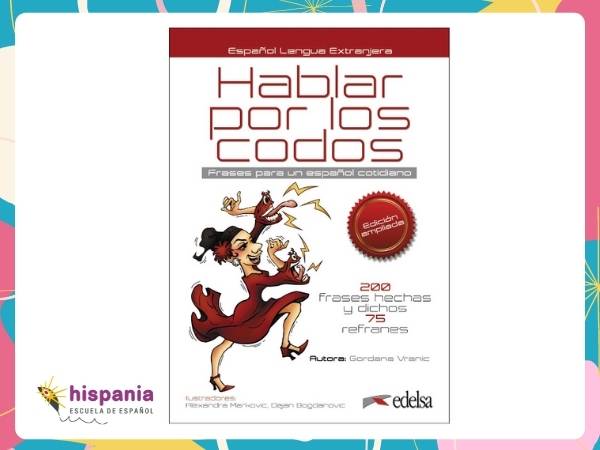
Hablar por los codos (Gordana Vranic, Editorial Edelsa)
Do you like Spanish sayings and expressions ?
Hablar por los codos focuses on exactly that.
In this book you will learn a lot of Spanish expressions used in various situations.
They are accompanied by exercises so you can put them into practice.
The illustrations are really fun which will make practicing with this book very enjoyable.
It is a brilliant book to help you integrate with native Spaniards.
Want to behave like a Spaniard?
Well learn and use your own expressions and jokes. 😁
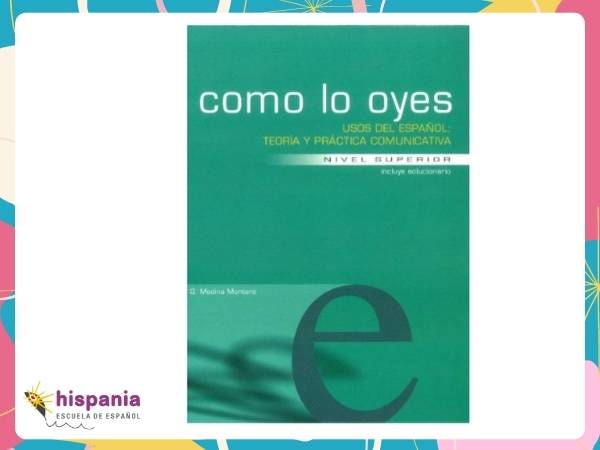
Como lo oyes. Teoría y Práctica comunicativa (Carlos G. Medina Montero, Editorial S.E.G.L.)
Como lo oyes is a comprehensive book that looks at grammar and vocabulary.
It is aimed at students with an intermediate or advanced level in Spanish.
It's divided into 17 sections and each section follows the sequence below:
- The blackboard: provides a summary of the most relevant points of the unit.
- Exercises: the practical part where you can consolidate the theory.
- Qué me cuentas: Here what has been learned is developed with vocabulary or expressions.
At the end of Como lo oyes There are solutions to all exercises.

Sin duda. Teoría y Práctica comunicativa (Carlos G. Medina Montero, Editorial S.E.G.L.)
Sin duda is another book by Carlos G. Medina Montero.
It is also aimed at students with a intermediate - advanced level in Spanish.
This time, the contents revolve around three clear grammar rules:
- Indicative tenses, especially the past tenses.
- Ser and estar, por and para and periphrastic structures.
- The subjunctive.
It also follows the blackboard scheme, exercises, expansion with vocabulary, solutions to the exercises and a glossary with verb forms.

Temas de Gramática: nivel superior (Concha Moreno, Editorial S.G.E.L.)
Let's take another look at grammar guidebooks.
But this time focusing on a advanced level.
Temas de gramática by Concha Moreno, is an excellent book for those who want to delve into complex Spanish grammar .
The theoretical explanations are very elaborate , very long and include many examples and illustrations to break up the text.
I have used it in class with C1 and C2 levels and it has also been useful to me as a teacher to learn new things.
This is a Spanish book for foreigners is really interesting. 👌
Books for studying with a teacher
Do you prefer learning Spanish in class with a teacher ?
Truthfully, I think this is the best way to do it.
You learn much better by talking to a native expert with ELE training who can correct your mistakes.
If you add all that to the social element of being in a classroom, learning like this becomes a lot more fun.
In our Spanish classes at Hispania, escuela de español , you will learn Spanish and have fun at the same time.
And what are the best books for learning Spanish with a teacher?
Vamos a verlos. 😉

Nuevo Sueña 1, 2, 3, 4 (Editorial Anaya)
The Nuevo Sueña books offer functional content based on the four learning skills:
The listening comprehension , the reading comprehension , the oral expression and written expression.
Its publisher defines it as a flexible, comprehensive and adaptable book.
Honestly, it is one of the most interesting books for teaching Spanish to adult foreigners that I have ever used.
In addition, these books offer activities that are tailored to very real and everyday situationsand include images and a pleasant visual format.
In the four books almost all levels are covered:
- Nuevo Sueña 1 is equivalent to a book for Spanish A1 and A2 level learners.
- Nuevo Sueña 2 is equivalent to Spanish B1 level learners.
And so on.

Nuevo Prisma. Curso de español para extranjeros (Editorial Edinumen)
The Nuevo Prisma books are, in my opinion, some of the the best Spanish books.
There is a book for each level.
Each book has a multitude of grammar exercises, expressions, vocabulary, audios, texts, playful activities... absolutely everything.
The most interesting thing is that it's divided into two books: a work book and an exercise book.
At work book there are a lot of texts and theoretical explanations in small boxes so the volume of text isn't overwhelming at all.
At exercise book you will find grammar activities that correspond to the sections in the work book.

El Ventilador. Curso de español de nivel superior (Editorial Difusión)
El Ventilador is a Spanish guidebook for advanced level C1.
The book is characterised by its clear conveyance of all tasks, including the grammar section.
Likewise, it includes a variety of texts with different registers.
Is made up of 33 sections which are divided into 6 units:
- Saber hablar
- Saber hacer.
- Saber cultura.
- Saber entender.
- Saber palabras.
- Saber gramática.
El Ventilador also incorporates interesting additional materials: a CD and a DVD so that the student can listen to audios or watch videos adverts, reports, interviews, etc.
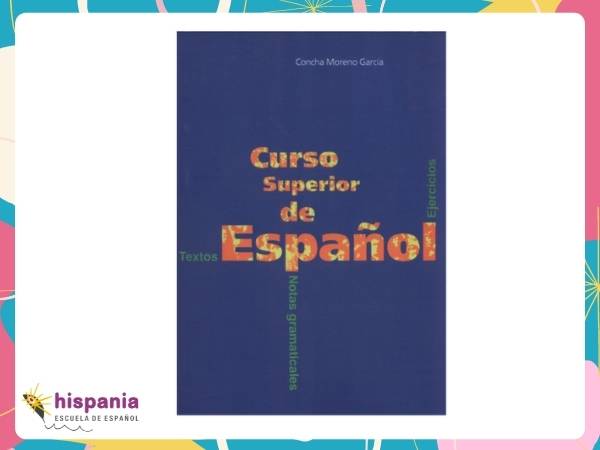
Curso superior de español: textos, notas gramaticales y ejercicios (Concha Moreno)
Another Concha Moreno book on this list.
Curso superior de español deals with grammar and offers texts at an advanced level of Spanish.
I'ts divided into 66 teaching units.
The grammar topics are dealt with first, followed by relevant exercises for learning spanish.
Next, reading comprehension is looked at with long and complex texts in the educational, informative and scientific field.
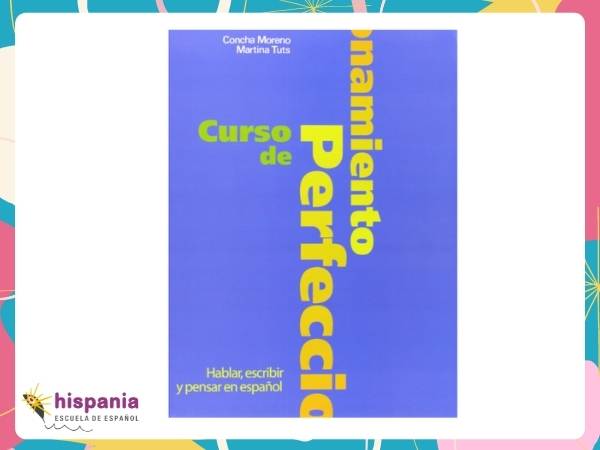
Curso de Perfeccionamiento. Pensar, hablar y escribir en español (Concha Moreno y Martina Tuts, Clave edición)
Curso de Perfeccionamiento is another guidebook for C1 level or higher.
It's aimed at students and professionals who want to improve their Spanishthrough the expansion of vocabulary and linguistic terms.
The book looks at:
- A large repertoire of connectors.
- Comprehensive analysis of verb tenses.
- Contrastive analysis of conjunctions.
- Contrast of pronominal and reflexive verbs.
A lot of vocabulary and topical situations.
Guidebooks for preparing for Spanish exams
Do you want to take a specific Spanish exam?
Then read the following recommendations carefully on the best Spanish books for revising for the DELE and SIELE exams.
DELE exam
We have already talked a lot about the DELE exam on this blog.
Anyone who wants to certify their Spanish level will need to pass the DELE or SIELE exam.
For this reason, there are many Spanish books for foreigners about passing the DELE exam.
Let's take a look at some of them.

Cronómetro, edición nuevo DELE (Iñaki Tarrés, Mª José Pareja, Fco. Javier López y Pedro Calderón. Editorial Edinumen)
The book Cronómetro, edición nuevo DELE is a Spanish book for students with a B1 and B2 level of Spanish.
the book contains the following:
- Introduction for exam candidates and teachers.
- Explanation of tests and exercises.
- Tips for using the guidebook.
- 4 mock exams.
- Tips for the day of the exam.
- Activities for developing your skills.
- B2 level grammar.

Preparación al DELE (Pilar Alzugaray, M.ª José Barrios y M.ª Paz Bartolomé. Editorial Edelsa)
Preparación al DELE has books at different levels.
It includes six complete mock exams, similar to the real ones.
At the end of the book there are also helpful tips on how to pass the exam successfully.
The audios are downloadable and with different Hispanic accents.
The solutions and transcripts of the audios are found in the book.
Want to know the topics on some of the mock exams ?
Hee's the A2 DELE exam so you can get an idea:
Exam 1. People and housing.
Exam 2. Buying, shopping and eating out.
Exam 3. Health, hygiene and nutrition.
Exam 4. Studies and culture.
Exam 5. Work.
Exam 6. Leisure, travel and communications.
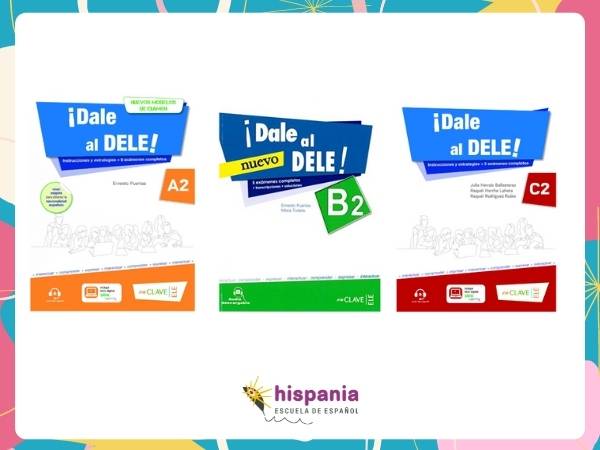
Dale al DELE, nuevos modelos de examen (Ernesto Puertas Moya, Editorial En Clave ELE)
There is a Dale al DELE book for each level, from A1 to C2.
It features:
- 6 mock exams.
- Strategies and tips.
- More than 130 exercises for practicing the 4 skills.
- 5 hours of audio resource for practicing listening comprehension and oral interaction.
- Additional exercises.
- Annotated solution sheets.
- Real samples of written expression.
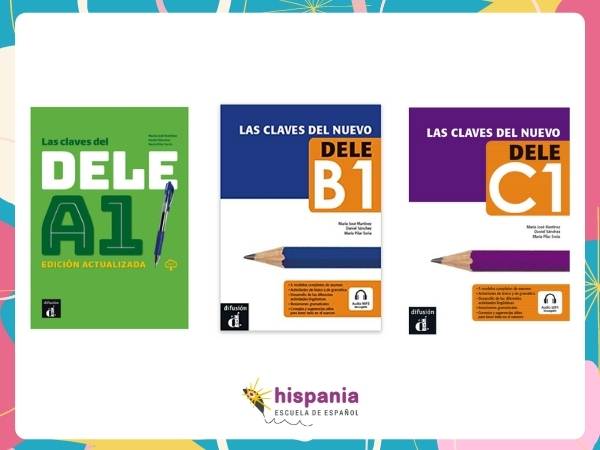
Las claves del nuevo DELE (M.ª Pilar Soria, M.ª José Martínez y Daniel Sánchez. Editorial Difusión)
There is also a version of Las claves del nuevo DELE for each level.
This is a practical and manageable guidebook.
It is structured in five topical sections :
- Lexical content.
- Grammatical contents.
- Resources for communication.
- Cultural references required at each level.
In addition, each unit contains a section with the key on how to help the student successfully pass each test.
At the end of the book, they offer five mock exams from the official DELE exams.
Las claves del nuevo DELE are highly recommended books for those taking the DELE exam, but they are also a brilliant way to improve your Spanish in general.
SIELE exam
Do you plan on taking the SIELE exam instead of the DELE?
Taking The SIELE exam is a great idea!
We recommend the following book.
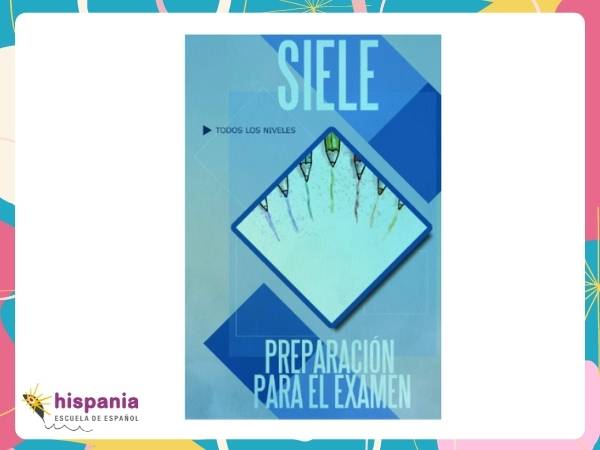
SIELE, preparación para examen (Ramón Díez Galán)
SIELE, exam preparation; contains a multitude of exercises from level A1 to level C1.
every level in just one book?
Hallelujah! 🙌
This makes it a perfect guidebook for preparing for the SIELE exam, as well as good material for learning Spanish in general.
The manual has exam past papers, explanations and grammar exercises and recommendations.
It will help you become familiar with the particularities of the SIELE exam, which is quite different from DELE.
We have come to the end of our list of 17 books and guides for learning Spanish.
I hope you've found this article helpful.
If you know of other interesting books that you think should be on our list, let us know in comments.
¡Hasta pronto! 😉
Article written by Carlos Martínez for Hispania, escuela de español
More articles

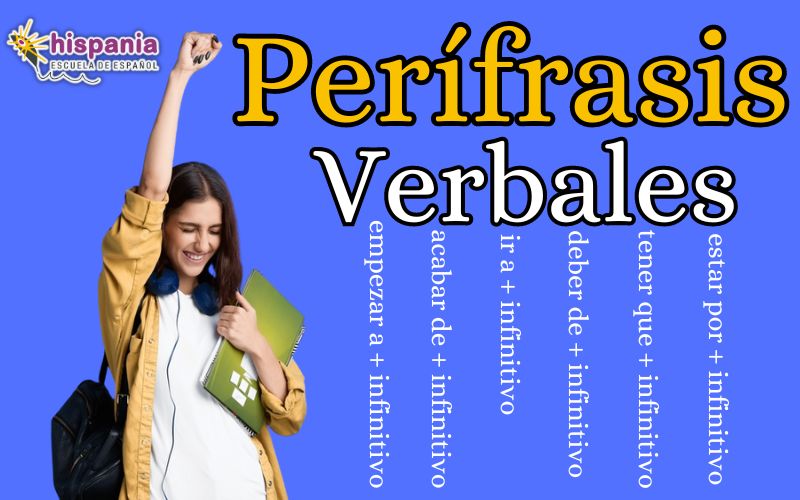
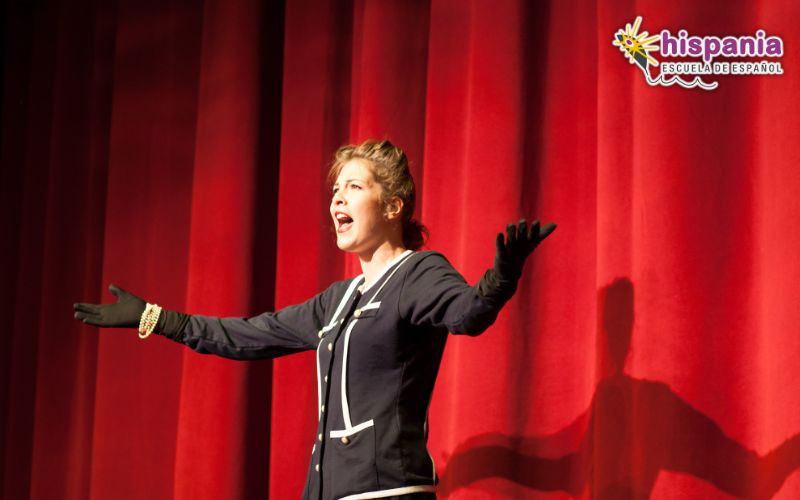

2 comments on “The 17 best books and manuals to study Spanish”
Thank you very much!
You're welcome, we're glad it helped you!
If you are interested in learning Spanish, you can see the information on our website:
https://hispania-valencia.com/